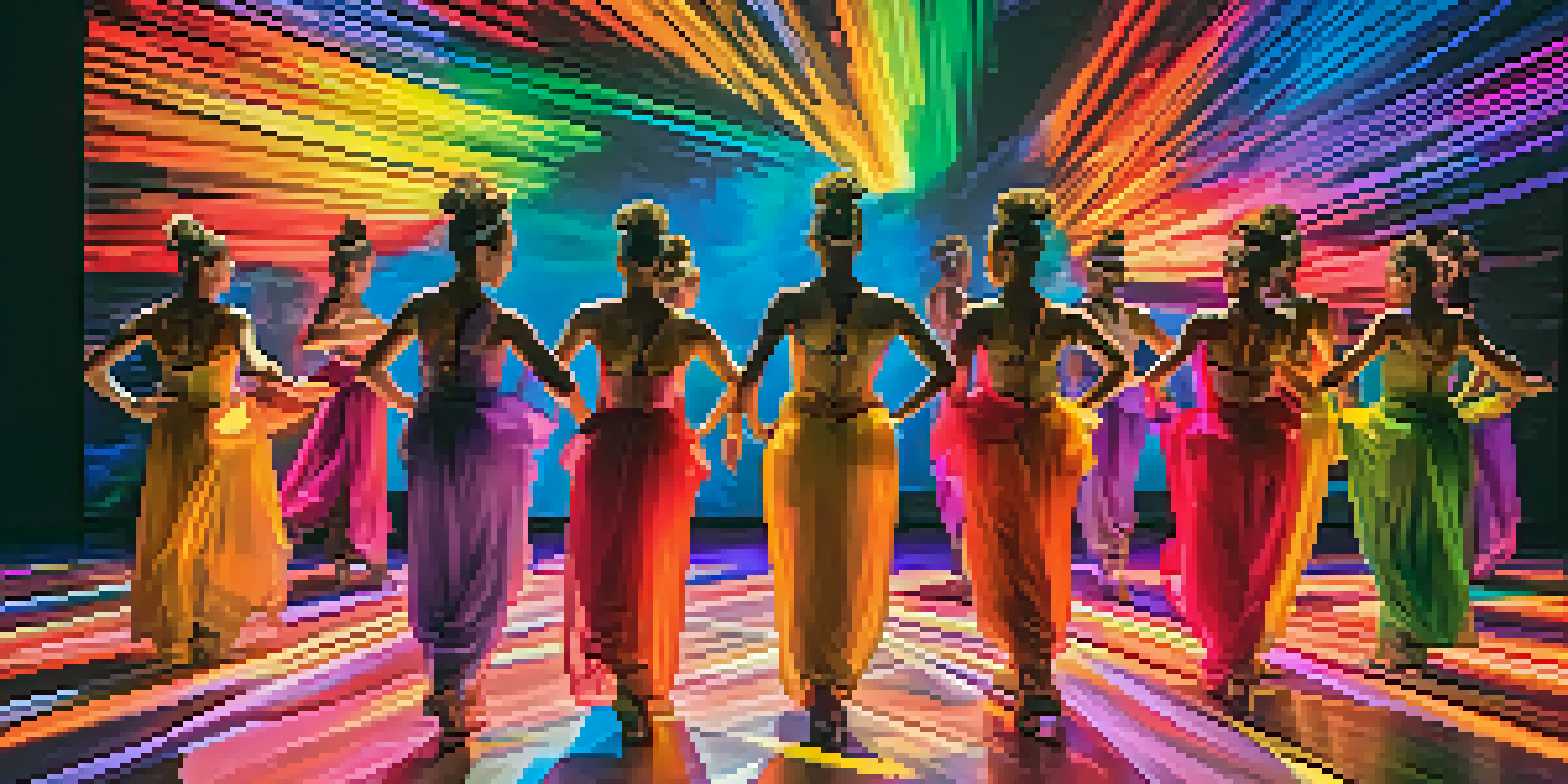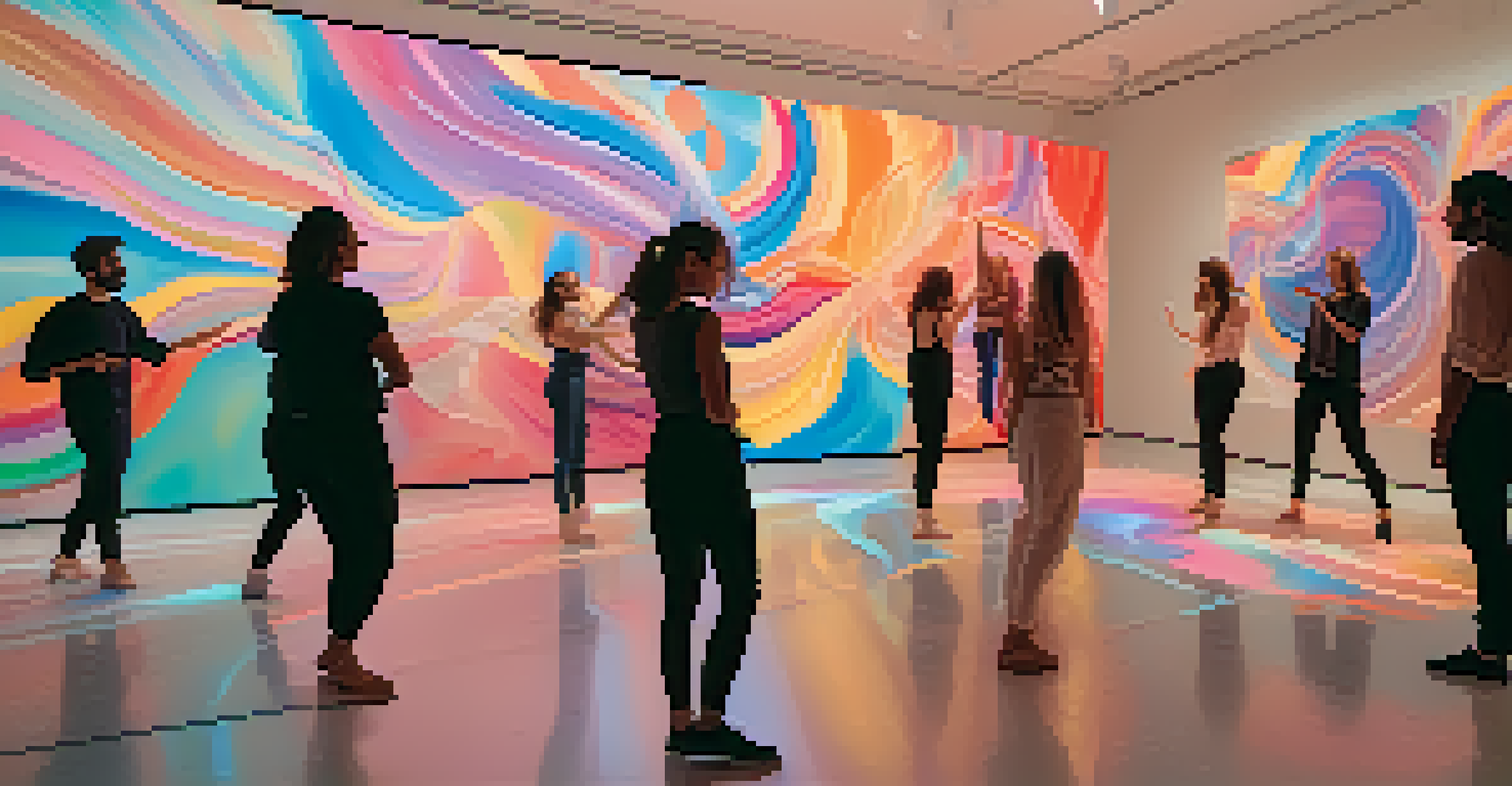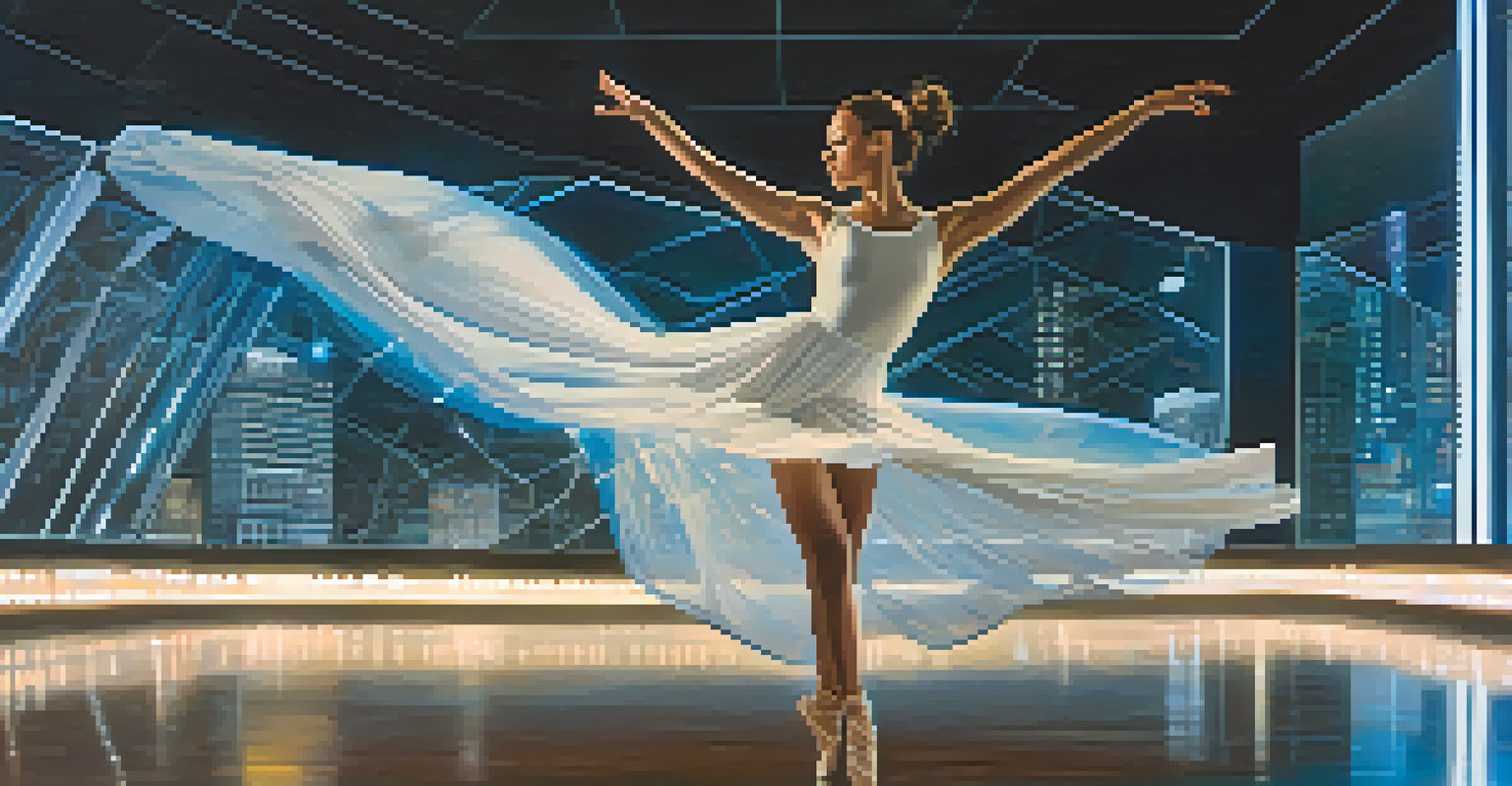The Fusion of Dance and Technology in Public Performance

The Evolution of Dance in the Digital Age
Dance has always been a dynamic art form, but with the advent of technology, its evolution has accelerated. From traditional movements to innovative choreography, technology has opened new avenues for expression. Dancers today can incorporate visual effects, interactive elements, and multimedia to create rich, immersive experiences.
Dance is the hidden language of the soul.
For instance, augmented reality (AR) allows dancers to perform alongside digital avatars, creating a visual spectacle that captivates audiences. This not only enhances the aesthetic appeal but also invites viewers into a narrative that blurs the lines between reality and fiction. As technology advances, so does the creativity of choreographers who are eager to push boundaries.
Ultimately, the fusion of dance and technology reflects our society's constant quest for innovation. It invites both dancers and audiences to rethink what performance can be, making it more relevant and engaging in the modern world.
Interactive Installations: A New Dance Experience
Interactive installations are transforming the way audiences experience dance. These installations often use sensors and digital projections to create a two-way interaction, allowing viewers to influence the performance. Imagine a dance piece where your movements affect the visuals on stage, creating a unique experience for each person in the audience.

Such experiences not only enhance engagement but also democratize art, making it accessible to everyone. By inviting audience participation, dancers can break down barriers, fostering a sense of community and shared experience. This form of interaction can evoke a range of emotions and responses, making the performance memorable.
Technology Transforms Dance Artistry
The integration of technology, such as AR and wearable devices, is revolutionizing dance by enhancing performances and creating immersive experiences.
Moreover, these installations often encourage collaboration between artists and technologists. This blending of skills leads to innovative solutions and fresh ideas, pushing the boundaries of what public performances can achieve.
The Role of Wearable Technology in Dance
Wearable technology is another exciting development in the fusion of dance and technology. From smart fabrics to motion sensors, dancers can now track their movements and receive real-time feedback. This not only aids in performance improvement but also enhances choreography by allowing dancers to explore new possibilities.
Technology is best when it brings people together.
For example, some wearable devices can change music or lighting in response to a dancer's movements, creating a highly synchronized performance. This integration of technology can lead to breathtaking visual effects, making the performance feel more dynamic and alive. It also allows choreographers to experiment with new styles and techniques that were previously unimaginable.
As dancers embrace these innovations, they are redefining the relationship between movement and technology. This evolution not only enhances their craft but also captivates audiences, making each performance a unique journey.
The Impact of Social Media on Dance Performances
Social media has revolutionized the way dance performances are shared and consumed. Platforms like Instagram and TikTok provide a stage for dancers to showcase their talents and connect with audiences worldwide. This accessibility allows for a diverse range of styles and influences to flourish, creating a vibrant dance community.
Moreover, social media enables dancers to collaborate across borders, merging different cultural styles and perspectives. This global exchange enriches public performances, offering audiences a taste of various dance forms that they might not encounter otherwise. It fosters a spirit of creativity and innovation that benefits the entire art form.
Social Media Expands Dance Reach
Platforms like Instagram and TikTok enable dancers to showcase their talents globally, fostering a vibrant and diverse dance community.
However, this shift comes with challenges, such as the pressure to create viral content. Dancers must balance their artistic integrity with the demands of social media, navigating the fine line between authenticity and trendiness. Despite this, social media remains a powerful tool for promoting dance and engaging new audiences.
Virtual Reality: Reimagining Dance Audiences
Virtual reality (VR) is set to transform the way audiences experience dance performances. With VR technology, viewers can immerse themselves in a 360-degree environment, making them feel as if they are part of the performance. This level of immersion offers a unique way to engage with dance, creating an emotional connection that traditional viewing cannot replicate.
Imagine being transported to the stage, where you can watch every movement and expression up close, experiencing the performance from various angles. This technology not only enhances audience engagement but also allows performers to explore new creative possibilities. Choreographers can design pieces specifically for VR, creating experiences that are tailored to this medium.
As VR technology continues to evolve, it opens up exciting opportunities for accessibility. Audiences who may have difficulty attending live performances can enjoy dance from the comfort of their homes, breaking down physical barriers and expanding the reach of the art form.
The Intersection of Dance and Artificial Intelligence
Artificial Intelligence (AI) is becoming an intriguing player in the realm of dance. From generating music to assisting in choreography, AI technology is enhancing the creative process. Some choreographers use AI algorithms to analyze movement patterns, helping them develop innovative routines that blend human creativity with machine efficiency.
For example, AI can analyze vast amounts of dance footage to identify trends and styles, offering insights that dancers can incorporate into their work. This collaboration between human and machine not only speeds up the creative process but also opens doors to new styles and interpretations of dance.
AI Enhances Choreography Creation
Artificial Intelligence is aiding choreographers in developing innovative routines by analyzing movement patterns and trends.
However, the integration of AI raises important questions about the role of the artist. While technology can assist and inspire, it is the dancer's unique expression and emotional connection that ultimately brings a performance to life. Finding the right balance between technology and artistry is essential for the future of dance.
Future Trends in Dance and Technology
As we look ahead, the fusion of dance and technology is poised for even greater innovation. Emerging technologies like holography and advanced motion capture are likely to reshape public performances. These advancements will create stunning visual experiences, pushing the limits of what audiences expect from live dance.
Moreover, we may see more hybrid performances that combine various art forms, from theater to visual arts, all enhanced by technology. This multidisciplinary approach can create a richer, more engaging experience for audiences, inviting them to explore the narrative from multiple perspectives.

In addition, as issues of accessibility and inclusivity become more prominent, technology will play a key role in ensuring that everyone can enjoy and participate in dance. From virtual performances to interactive workshops, the future of dance will be defined by its ability to adapt and innovate, welcoming a diverse range of voices and experiences.